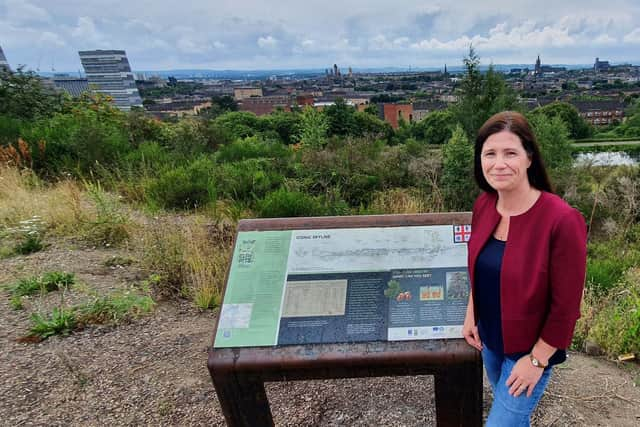Concerns raised that Glasgow canal could become hotbed for flytipping and dereliction
and live on Freeview channel 276
Chief executive Catherine Topley said the Clyde & Forth Canal in Glasgow could even slide back into the dereliction from which it was rescued only 25 years ago, undermining its proven health benefits and key role in reducing flash flooding risks.
The Kelpies equine statues and nearby Falkirk Wheel boat lift on the Forth & Clyde Canal each attracted some 500,000 visitors a year pre-pandemic, generating vital extra revenue.


Advertisement
Hide AdAdvertisement
Hide AdMs Topley said future projects of that scale would be “extremely challenging” because they “take many years to deliver and that’s a very difficult thing to do when you are working on yearly budgeting.”
A new bridge over the canal being built at Stockingfield in Glasgow is a two-year project, while the Claypits nature reserve at Hamiltonhill, completed in 2021, took five years.
Ms Topley said the Scottish Government had yet to approve Scottish Canals using money from the sale of land for housing beside the canal in Glasgow to fund the upgrading of canalside buildings which would provide significant rental income and repay the planned £1.3m investment within a few years.
She said: “We need to find a way to operate that allows us to retain our income to grow it, because one-year spending results in one-year thinking.
Advertisement
Hide AdAdvertisement
Hide Ad“We have a 250-year-old canal so we need to think much longer than that.
“The canal is a community asset - it instigates business, housing and community projects, and mental and physical health, which is really important.”
Ms Topley said the lockdowns had shown how fast the canal could revert to its previous state, when people used it to dump rubbish like old couches and doors.
She added: “There’s a real risk, without proper investment and utilisation of the canals, that it becomes this space again that isn’t a value to the community, and very quickly it becomes a health risk as opposed to a benefit.
Advertisement
Hide AdAdvertisement
Hide Ad“That would be dangerous because research has demonstrated the canals are taking quite a lot of rainwater and mitigating flash floods as we see changes in the environment.”
A Transport Scotland (TS) spokesperson said: “We fully recognise the benefits which canals offer and we are committed to supporting Scottish Canals to continue to deliver these.
“Like all other public bodies in Scotland, Scottish Canals is operating in a challenging environment where public funds are extremely tight.
“Since 2019, its capital grant has increased by 87 per cent, as well as an uplift each year in resource funding - plus additional funding to mitigate the impact of Covid.”
Comment Guidelines
National World encourages reader discussion on our stories. User feedback, insights and back-and-forth exchanges add a rich layer of context to reporting. Please review our Community Guidelines before commenting.